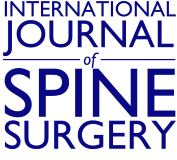Abstract
Background Lumbar disc herniation with radiculopathy has a favorable natural history, and a selective nerve root block (SNRB) is an accepted treatment modality. This study aims to ascertain the temporal pattern of pain and disability following the administration of an SNRB in the management of lumbar disc herniation with radiculopathy because there is limited evidence regarding this issue in the published literature.
Methods This prospective study included 50 patients who underwent an SNRB and were followed for 3 months. Numerical Rating Scale (NRS) for back and leg pain and Oswestry Disability Index (ODI) and Depression Anxiety Stress Scales-21 (DASS-21) scores were collected. At the final follow-up at 3 months, the number of patients who underwent surgery was ascertained.
Results Forty-two of 50 (84%) patients avoided the surgery with a reduction in mean preinjection NRS for back and leg pain from 7.5 (SD 1.33) and 7.7 (SD 1.35) to 3.1 (SD 1.69) and 2.3 (SD 1.14) (P < 0.001), respectively, within the 30 minutes after injection. The pain relief was sustained until the last follow-up. The ODI score also decreased from a mean preinjection level of 59.4 (SD 14.69) to 26.3 (SD 9.43) (P < 0.001) at 3 months. The mean preinjection depression score was higher in patients who had recurrence of pain and eventually underwent surgery.
Conclusion Early administration of an SNRB in the course of lumbar radiculopathy is recommended as it provides instantaneous and sustained relief of back and leg pain and disability in a majority of patients.
Clinical Relevance SNRB should be administered early in the course of management of lumbar radiculopathy and should not be delayed until after other non-surgical modalities have failed.
Level of Evidence 2.
- lumbar disc herniation
- lumbar radiculopathy
- transforaminal steroid injection
- selective nerve root block
Footnotes
Funding The authors received no financial support for the research, authorship, and/or publication of this article.
Declaration of Conflicting Interests The authors declared no potential conflicts of interest with respect to the research, authorship, and/or publication of this article.
Patient Consent for Publication We authors certify that we have obtained all appropriate patient consent forms, in which the patients gave their consent for their clinical information to be reported in the journal. The patients understand that their names and initials will not be published and due efforts will be made to conceal their identity, but anonymity cannot be guaranteed.
- This manuscript is generously published free of charge by ISASS, the International Society for the Advancement of Spine Surgery. Copyright © 2021 ISASS. To see more or order reprints or permissions, see http://ijssurgery.com.






